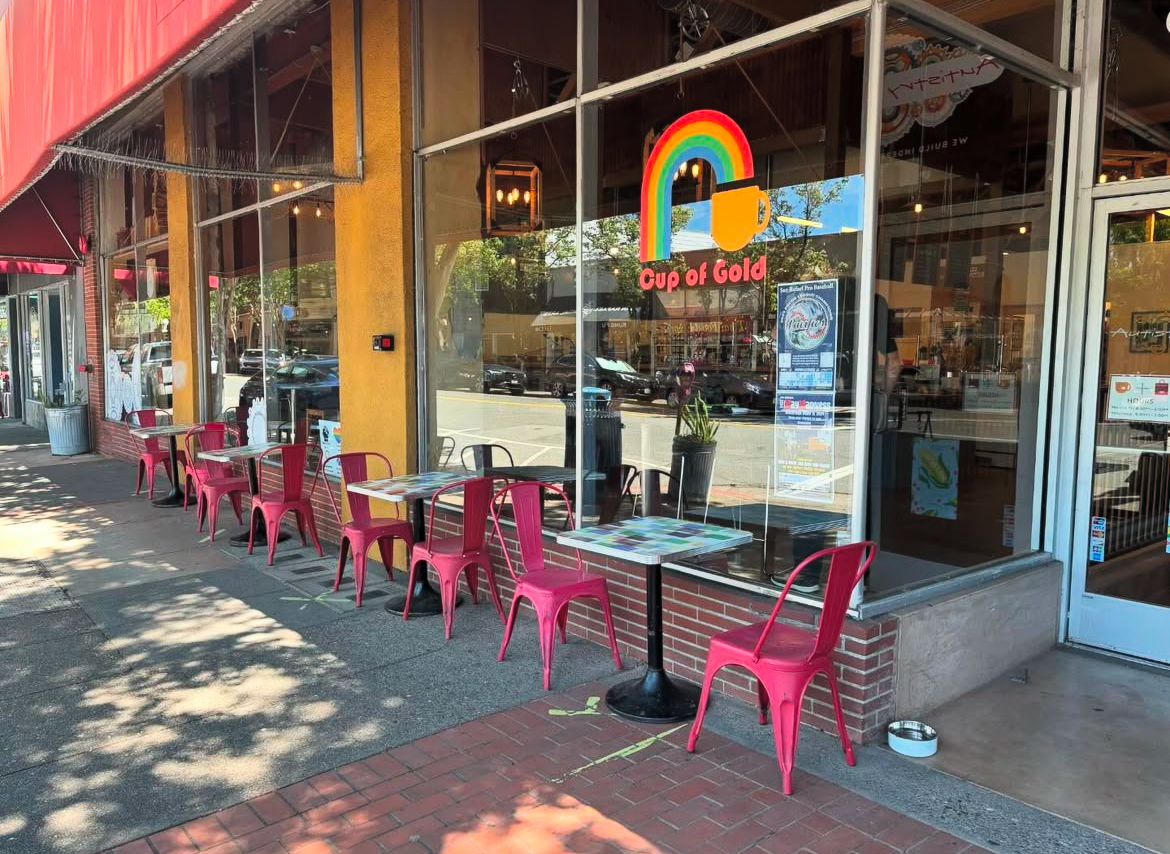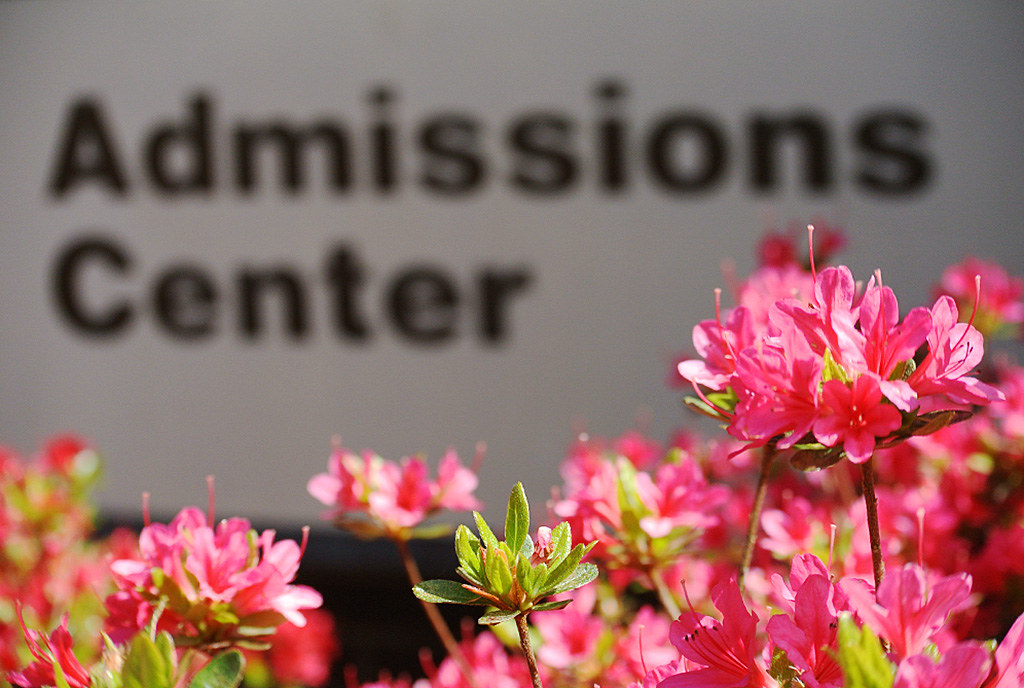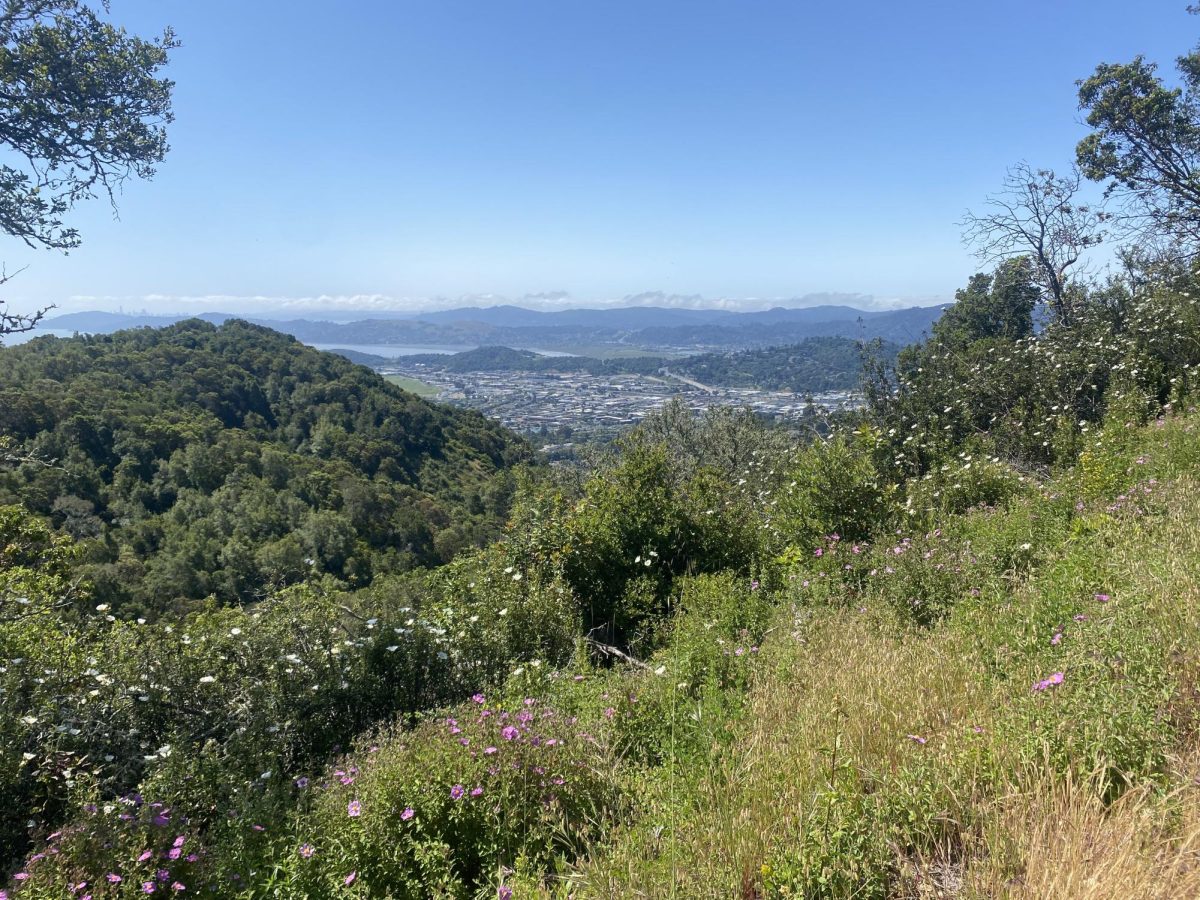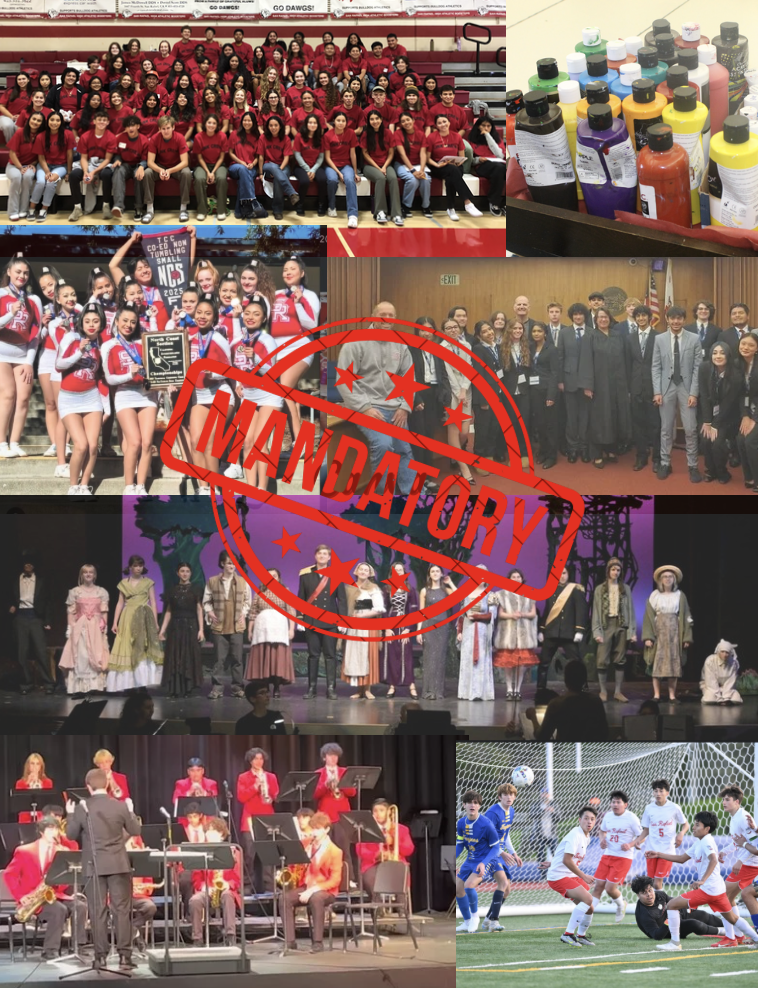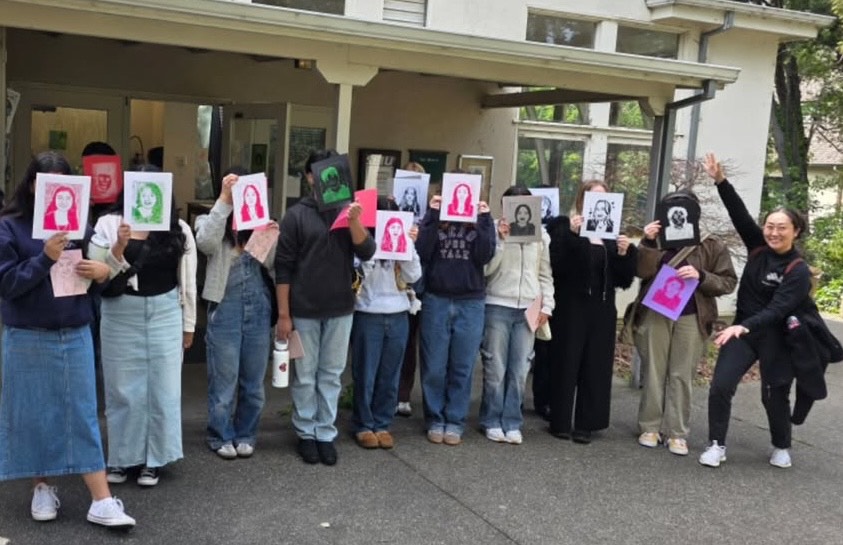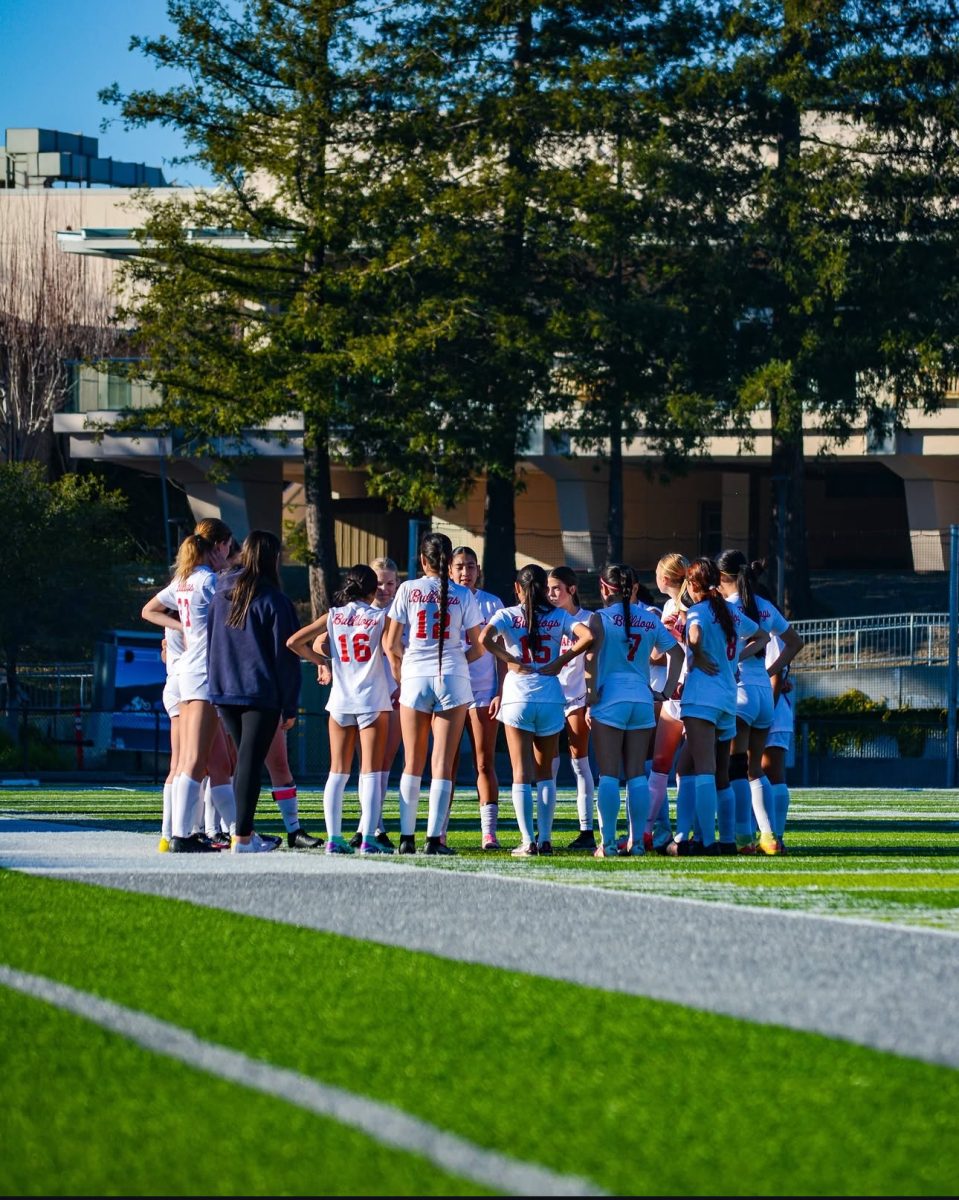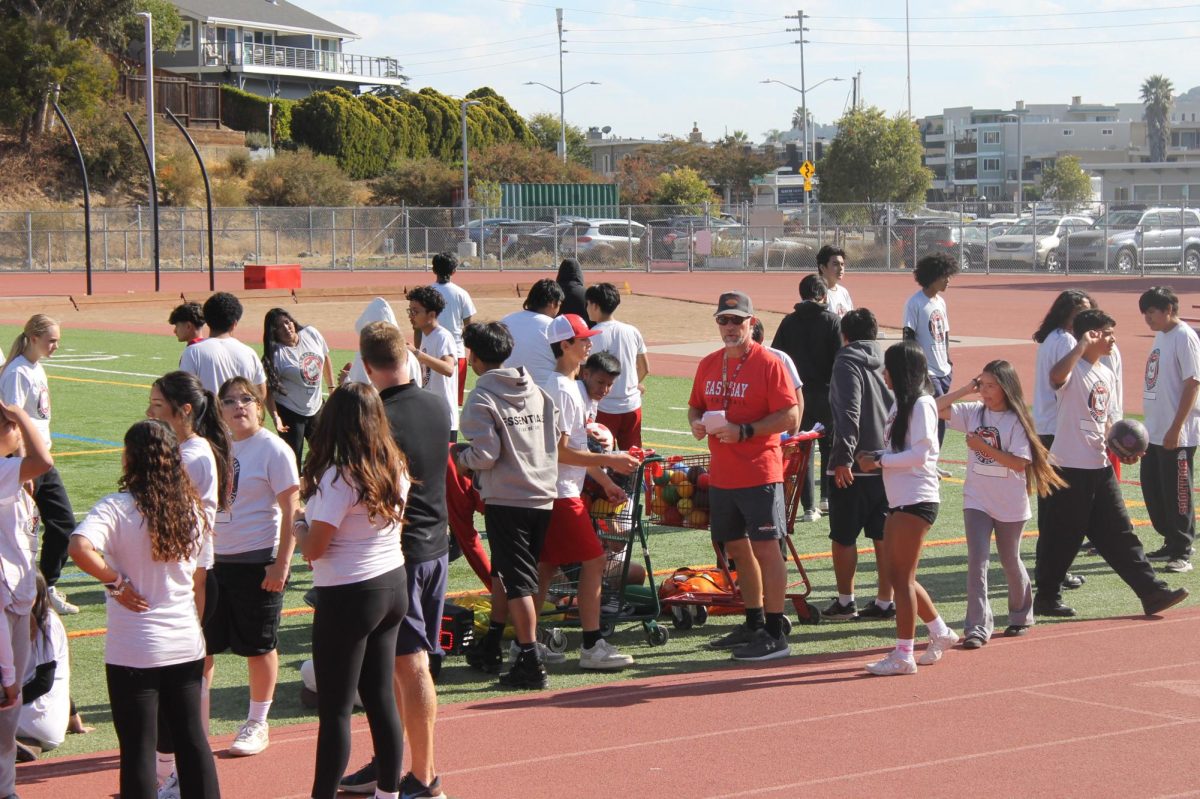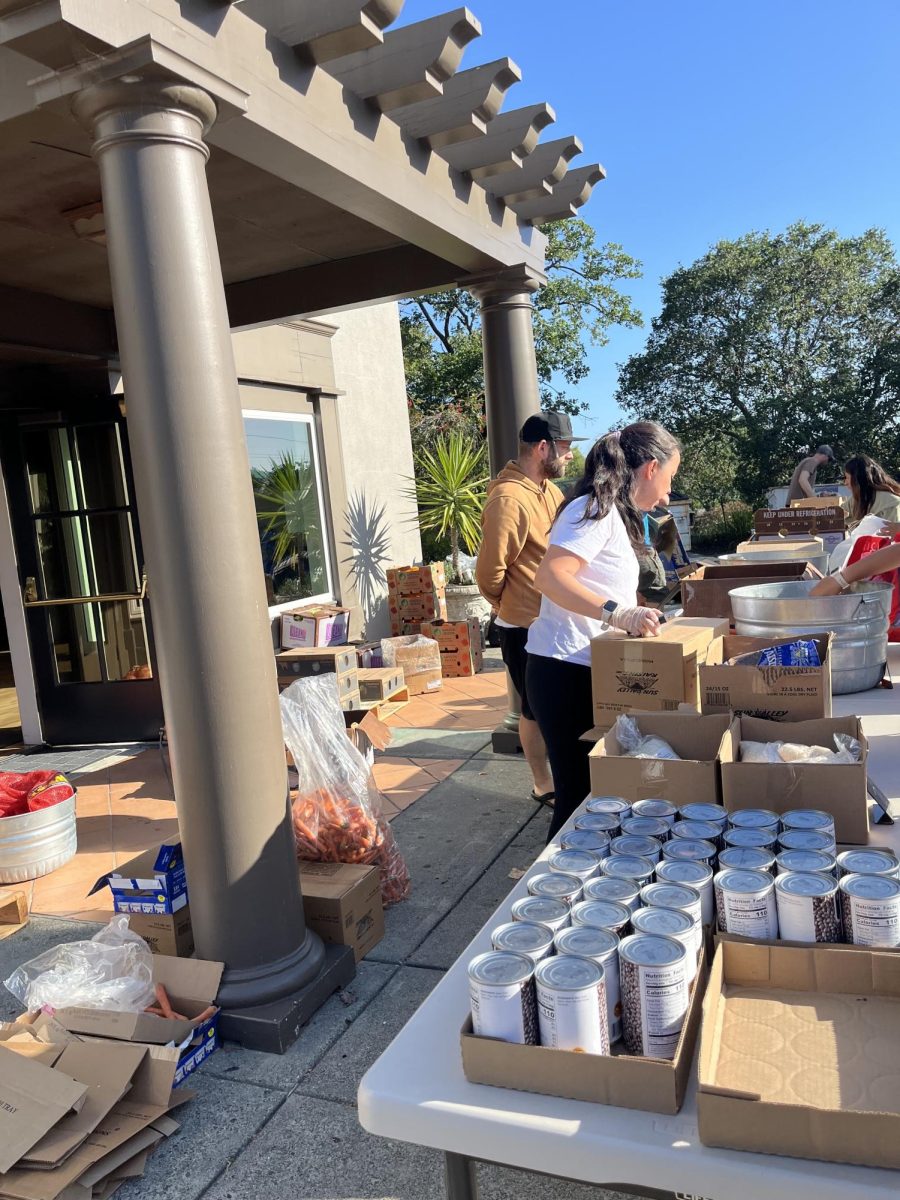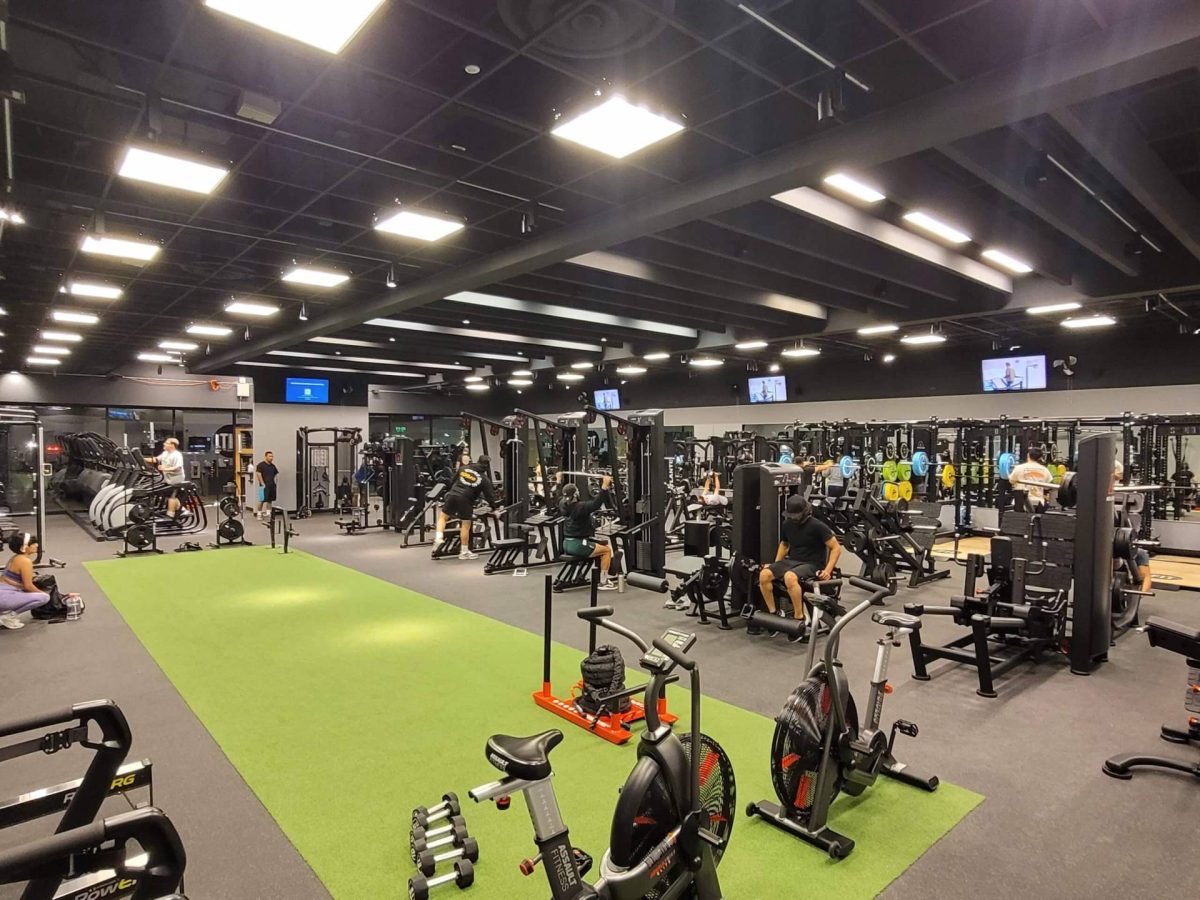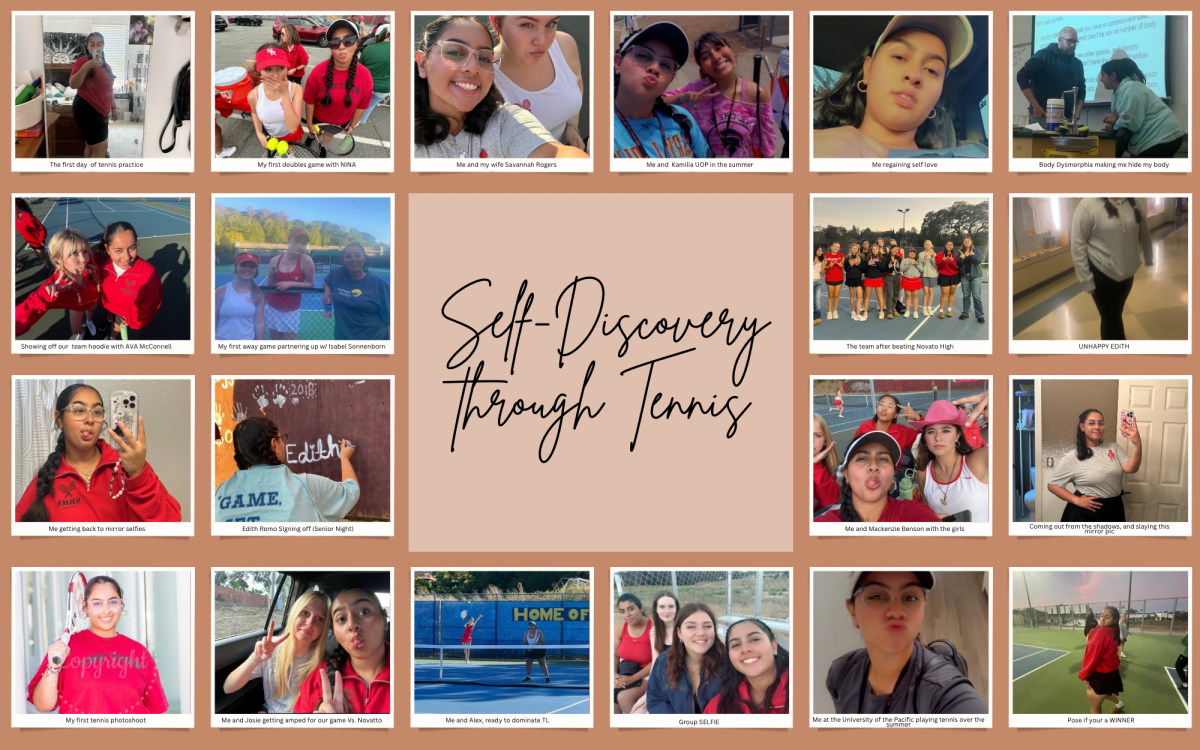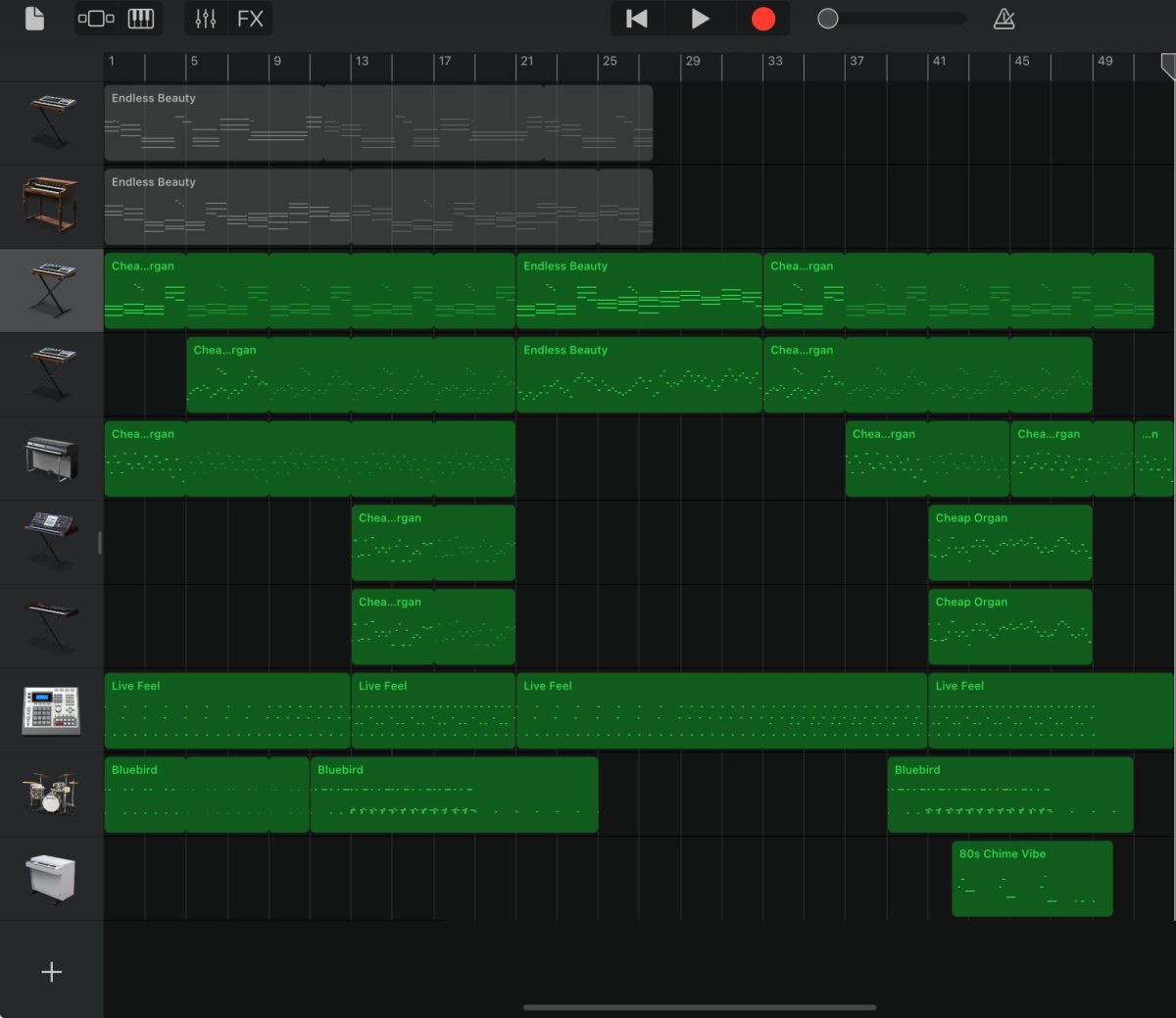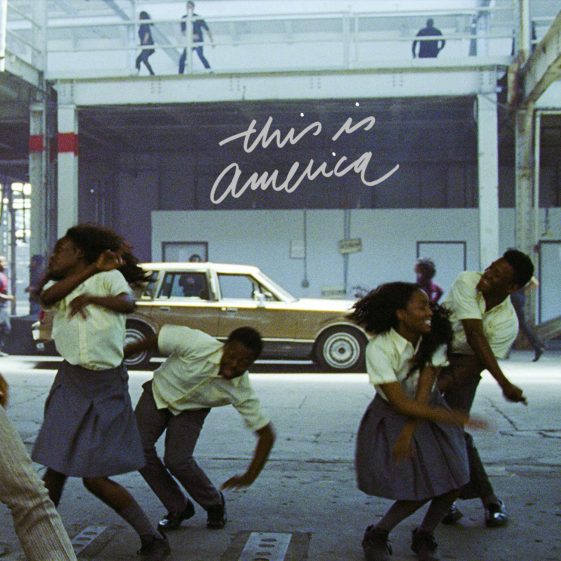Over the course of my four years at San Rafael High School, there have been numerous changes and rules that’ve been added to the tardy system to help deter students from arriving late to class. Students are marked tardy even if they arrive a minute late, and in order to go to class, students must stop at the office to get a pass. However, stopping by the office takes up too much time, which only adds to the amount of instructions we miss which later on affects academic progress and grades.
Along with this rule and having this new tardy system. Staff now have to hand out a different color of tardy pass representing all seven class periods. Which helps notify the teachers that the pass is accurate, and also having to add a Minga pass to keep the tardies recorded. Minga no longer changes the tardies for teachers. Teachers are now responsible to take over by correcting the attendance when students arrive through Aeries Portal or else students will stay marked absent and not tardy.
While this process helps encourage students not to be tardy, it robs students of their class time. Not only does it affect students on an academic level, but it also impacts classrooms, teachers, and the overall school environment. Tardiness has become a quiet but serious obstacle for those with transportation limitations. Of which I’ve personally dealt with and believe needs to be discussed more.
Ms. Cielo, from the attendance office at SRHS provided me with the number of tardies throughout the week. On average, there are between 194 and 210 tardies each day. Monday’s first period has the highest number with the most tardies, while Wednesday sees the lowest overall. Students are mostly late during the morning, specifically for the first and fourth period between 8:30-9:00 AM. Another time that students are often late is after lunch, in which students are going into their third period which is at (1:35-2:00 PM) or fifth period from (12:35-1:00 PM).

Speaking from my own experience, tardies have always been an issue but never on purpose. Preventing it from having it become a habit for myself. For a long time I didn’t think being late mattered. Since my freshman year, I always relied on rides from friends, the bus, or my mom. I never put any importance into tardies and how they would affect me academically or so in my personal life. As a senior now I realized how being on time has prevented me from falling behind on lessons, homework, and quizzes. I would miss the most important instructions and more than that, my attendance records portrayed me as an irresponsible student.
Madaline Diaz, a senior at SRHS, explains, “ I drive myself to school and drop off my brother by 7:45 am at Bahia Vista Elementary. I also pick up my friends around the canal and still manage to make it on time. There’s always a way to make it on time, it’s just the lack of responsibility that others don’t have.” Meaning students who really care about their education and want to be there ready to learn have to take care of their own reputation and be responsible when it comes to arriving on time. Accountability and making adjustments to be on time are habits that prove a students’ dedication to their education.. When you care about being somewhere, you do your best to be there on time and others notice.
However, I’ve recognized that not every situation is the same. The majority of students from SRHS who live in the canal area have been struggling with another issue. According to the data, Canal traffic gets hectic during certain hours and areas in the morning. Between 7:30-8:30 AM only 259 commuters start leaving their homes. Between 8:00-8:30 AM the population of cars commuting increases to 710 commuters all rushing in. School bus traffic, Unavailable parents, and tight schedules make it feel impossible to beat the bell at times. Congested streets and not having parents available to leave them at school is why students struggle with managing their time and attendance.
Freshmen and Sophomores are the most likely to either have to take the bus or find new ways to commute to school. Shifting from middle school to high school is a huge shift for them and their routine. More so middle school offers more help and guidance, whereas in high school resources have to be sought out independently. Also, most freshmen and sophomores are between 13-15 years old and are not legally permitted to drive to school yet. Rocio Reyes, a sophomore at SRHS shared, “If I don’t get to the bus stop by 7:30 am, I know I will be late to class due to how overcrowded the buses are of students and having to wait until there’s space on the next ones.” This comes to show the frustration of not being able to make it on time even when things are not under your control.
Franky Santos, a freshman at SRHS, said, “We ride bikes to school early in the morning, when we don’t leave by 7:45 AM we are tardy to our first period. I feel like some people are just late cause they wanna be late and just don’t care but the only time I’m late is when I wake up late and I have to get dropped off to school.”
Mr. Baker, a teacher at SRHS, said, “These are high school kids, they’re big kids now but except for the freshman they’re new to this. The big kids know what it means to be tardy so if that’s a bad habit then it’s just a bad habit like any other that needs to be fixed.”
By the time students reach junior or senior year, they’ve usually figured things out. They’ve managed to build better routines, learned from previous mistakes, and understand how tardies can affect them, whether it’s graduating, getting into college, or keeping up with their academic work. For seniors who have more freedom and experience than their underclassmen, being late becomes less of a struggle and more of a bad habit.
Brittney Camacho, a senior at SRHS, told me, “My freshman and sophomore year, I was late to class all the time. Back then, I didn’t think it was a big deal. But looking back, it really set me behind. I’d miss the start of the most important lessons and spend the rest of class trying to catch up. It made everything feel harder and my grades dropped faster. Now, I’ve gotten better at managing my time, and being on time just makes my whole day feel less stressful and caught up with my work.”
Tardiness also affects teachers, and other staff members who care and want to look after their students. Ms. Verheecke, a teacher at SRHS said, “Tardies for the class are too disruptive, when a student comes in I have to take care of them, check their Minga pass, mark their tardy on Aeries. I have to remember to do all those things while I’m trying to teach and answer questions from around the classroom.”
Not only do tardies affect students but it also affects the classrooms they walk into. It becomes a disruption during a lesson which causes a distraction for all. It also becomes a challenge for teachers to have to pause and take care of marking tardies in the middle of their lessons. Teachers have to pause to mark late arrivals, reset the energy of the room, and sometimes re-explain the instructions all over again. There isn’t much a teacher can do to prevent their students from arriving late and disrupting class.
Although every student has a different story and reason as to why they’re late, others have made it a habit to arrive at school late or show up whenever they feel like it. Occasional tardiness can be understandable but when it becomes consistently without a valid reason, as Ms. Cielo explained, it reflects a lack of responsibility and having a trivial attitude towards other peers and teachers in the classroom.
Effectiveness in responsibility and the class environment can also accumulate up to students’ grades. Alejandro Santos, a senior at SRHS, said, “I lose participation points because some teachers use that based on your tardies which lowers my grade more than a homework assignment.”
Ms. Farrell, a teacher at SRHS, said, “Students don’t get enough sleep and they’re tired. Those are some students and others have obstacles with arriving on time whether it’s traffic or siblings’ schedules. For others I think it’s a habit of arriving late. Once we start arriving late it’s hard to build back the habit of arriving on time.”
The biggest challenge SRHS students face is not having enough reliable methods of transportation. Students living in the canal neighborhood rely on public transit or long walking routes to get to school on time which has proven problematic because of traffic and overcrowded buses .
Mr. Nemiroff, a counselor at SRHS, added, “I understand the challenges of getting to school on time and I think there are some systemic issues within our community that should improve. Our transit system is one and I also wish there was a bridge in between SRHS and the canal for better transportation.” Meaning SRHS staff see this as a positive solution towards the transportation issue and the community needing to get more involved.
According to the Marin Independent Journal, the city of San Rafael received a $1.575 million grant to study and design a long planned pedestrian and bike bridge. That’ll connect the canal neighborhood to third street. Third street is right across from SRHS which will help students commute on their own and won’t need to rely on anyone else but themselves. With building this bridge the main priority is to improve the safety for everyone, shorten the time, avoid traffic , and better access to arriving at school.
Tardiness may not always be about laziness or irresponsibility, sometimes it’s about real life challenges students have to face every morning. While the new tardy system pushes for the responsibility of students it also adds on to overwhelming those who are already trying their best. With the suggested bridge, there’s hope that things will get easier and safer for students and for the rest of the community. Although the importance of holding students accountable still stands, understanding of their situations is what matters most.
Spanish Translation:
Durante mis cuatro años en la Preparatoria en San Rafael High School, se han implementado numerosos cambios y se han agregado reglas al sistema de tardanzas para disuadir a los estudiantes de llegar tarde a clase. Se marca a los estudiantes como tardes incluso si llegan un minuto tarde, y para ir a clase, deben pasar por la secretaría para obtener un pase. Sin embargo, pasar por la oficina nos quita demasiado tiempo, lo que aumenta la cantidad de instrucciones que perdemos, lo que posteriormente afecta el progreso académico y las calificaciones.
Además de esta regla y el nuevo sistema de tardanzas, los profesores ahora deben entregar pases de tardanza de un color diferente que representan los siete períodos de clase. Esto ayuda a notificar a los maestros que el pase es correcto y también requiere un pase minga para mantener las tardanzas registradas. Minga ya no cambia las tardanzas de los maestros. Los maestros ahora son responsables de corregir la asistencia cuando los estudiantes llegan a través del Portal Aeries; de lo contrario, los estudiantes permanecerán marcados como ausentes y no como tardanzas.
Si bien este proceso ayuda a animar a los estudiantes a no llegar tarde, les roba tiempo de clase. No solo afecta a los estudiantes a nivel académico, sino que también impacta a las aulas, al profesor/a y al ambiente escolar en general. Las tardanzas se han convertido en un obstáculo discreto pero serio para quienes tienen limitaciones de transporte. He lidiado con este problema personalmente y creo que es necesario hablar más al respecto.
La Sra. Cielo, de la oficina de asistencia de SRHS, me informó la cantidad de tardanzas a lo largo de la semana. En promedio, hay entre 194 y 210 tardanzas diarias. El primer periodo del lunes registra la mayor cantidad de tardanzas, mientras que el miércoles registra la menor cantidad. Los estudiantes suelen llegar tarde por la mañana, especialmente en el primer y cuarto periodo, entre las 8:30 y las 9:00 a. m. Otro momento en que los estudiantes suelen llegar tarde es después del almuerzo, cuando comienzan su tercer periodo (de 1:35 a 2:00 p. m.) o el quinto (de 12:35 a 1:00 p. m.).
Desde mi propia experiencia, las tardanzas siempre han sido un problema, pero nunca a propósito. Evitando que se convirtieran en una costumbre. Durante mucho tiempo, no pensé que llegar tarde importara. Desde mi primer año, siempre dependía del transporte de mis amigos, del autobús o de mi madre. Nunca le di importancia a las tardanzas ni a cómo me afectarían académicamente o en mi vida personal. Ahora, como estudiante de último año, me di cuenta de cómo la puntualidad me ha impedido atrasarme con las clases, las tareas y los exámenes. Me perdía las instrucciones más importantes y, más aún, mi historial de asistencia me retrataba como una estudiante irresponsable.
Madaline Díaz, estudiante de último año de SRHS, explica: “Conduzco sola a la escuela y dejo a mi hermano a las 7:45 a. m. en la escuela primaria Bahía Vista. También recojo a mis amigos en canal y aun así logró llegar a tiempo. Siempre hay maneras de llegar a tiempo, solo que es la falta de responsabilidad que otros no tienen”. Esto significa que los estudiantes que realmente se preocupan por su educación y desean estar listos para aprender deben cuidar su reputación y ser responsables de llegar puntualmente. La responsabilidad y la puntualidad son hábitos que demuestran la dedicación de un estudiante a su educación. Cuando te importa estar en un lugar, te esfuerzas por llegar puntual y los demás lo notan.\
Sin embargo, he reconocido que no todas las situaciones son iguales. La mayoría de los estudiantes de SRHS que viven en la zona del canal han estado lidiando con otro problema. Según los datos, una fuente de datos, el tráfico en el Canal se vuelve caótico a ciertas horas y zonas de la mañana. Entre las 7:30 y las 8:30 a. m., solo 259 personas empiezan a salir de sus casas. Entre las 8:00 y las 8:30 a. m., el número de vehículos que se desplazan aumenta a 710, todos con prisa. El tráfico de autobuses escolares, la falta de padres disponibles y los horarios ajustados hacen que a veces parezca imposible llegar antes de la hora límite. Las calles congestionadas y la falta de padres disponibles para dejarlos en la escuela son la razón por la que los estudiantes tienen dificultades para administrar su tiempo y asistencia.
Los estudiantes de primer y segundo año son los más propensos a tener que tomar el autobús o buscar nuevas maneras de ir a la escuela. Pasar de la secundaria a la preparatoria es un gran cambio para ellos y su rutina. Además, la secundaria ofrece más ayuda y orientación, mientras que en la preparatoria los recursos deben buscarse por cuenta propia. Además, la mayoría de los estudiantes de primer y segundo año tienen entre 13 y 15 años y aún no tienen permiso legal para conducir a la escuela. Rocio Reyes, estudiante de segundo año en SRHS, comentó: “Si no llego a la parada del autobús a las 7:30 a. m., sé que llegaré tarde a clase debido a la saturación de estudiantes en los autobuses y a tener que esperar a que haya espacio en los siguientes”. Esto demuestra la frustración de no poder llegar a tiempo, incluso cuando las cosas no están bajo tu control.
Franky Santos, estudiante de primer año de SRHS, dijo:“Vamos en bicicleta a la escuela temprano por la mañana, y si no salimos a las 7:45 a. m., llegamos tarde a nuestra primera hora. Siento que algunos llegan tarde solo porque quieren llegar tarde y simplemente no les importa, pero yo solo llego tarde cuando me despierto tarde y tengo que ir a la escuela”.
El Sr. Baker, profesor de SRHS, dijo: “Estos son estudiantes de preparatoria, ya son mayores, pero, a excepción del estudiante de primer año, son nuevos en esto. Los mayores saben lo que significa llegar tarde, así que si es un mal hábito, es simplemente un mal hábito como cualquier otro que necesita corregirse”.
Para cuando los estudiantes llegan al penúltimo o último año, generalmente ya han comprendido las cosas. Han logrado crear mejores rutinas, aprendido de errores anteriores y comprende cómo las tardanzas pueden afectarlos, ya sea para graduarse, ingresar a la universidad o mantenerse al día con sus estudios. Para los estudiantes de último año, que tienen más libertad y experiencia que sus compañeros de cursos inferiores, llegar tarde se convierte en un problema menor y más en un mal hábito.
Brittney Camacho, estudiante de último año en SRHS, me dijo: “Durante mi primer y segundo año, llegaba tarde a clase siempre. En aquel entonces, no me parecía un gran problema. Pero, en retrospectiva, me atrasaba mucho. Me perdía el comienzo de las clases más importantes y me pasaba el resto de la clase intentando ponerme al día. Hacía que todo pareciera más difícil y mis calificaciones bajaron más rápido. Ahora, he mejorado mi gestión del tiempo, y ser puntual simplemente me ayuda a sentirse menos estresada y a ponerme al día con el trabajo”.
Los efectos de las tardanzas en los estudiantes también afectan a los profesores y a otros miembros del personal que se preocupan y quieren cuidar de sus alumnos. La Sra. Verheecke, profesora de SRHS, dijo: “Las tardanzas son demasiado disruptivas; cuando un estudiante llega, tengo que atenderlo, revisar su pase de minga, marcar su tardanza en Aeries. Tengo que recordar hacer todo eso mientras intento enseñar y responder preguntas en el aula”.
Las tardanzas no solo afectan a los estudiantes, sino también a las aulas a las que entran. Se convierten en una interrupción durante la clase, lo que causa distracción para todos. También se convierte en un desafío para los profesores tener que hacer una pausa y gestionar el estado de las tardanzas en medio de sus clases. Los profesores tienen que hacer una pausa para marcar las llegadas tarde, restablecer la energía del aula y, a veces, volver a explicar las instrucciones. No hay mucho que un profesor pueda hacer para evitar que sus alumnos lleguen tarde e interrumpen la clase.
Aunque cada estudiante tiene una historia y una razón diferente para llegar tarde, otros han adquirido el hábito de llegar tarde a la escuela o presentarse cuando les apetece. Las tardanzas ocasionales pueden ser comprensibles, pero cuando se vuelven constantes sin una razón válida, como explicó la Sra. Cielo, reflejan falta de responsabilidad y una actitud trivial hacia los demás compañeros y profesores del aula.
La eficacia en la responsabilidad y el ambiente de clase también pueden influir en las calificaciones de los estudiantes. Alejandro Santos, un estudiante de último año de SRHS, dijo: “Pierdo puntos de participación porque algunos profesores los usan en función de tus tardanzas, lo que baja mi calificación más que una tarea”.
La Sra. Farrell, maestra de SRHS, comentó: “No duermen lo suficiente y están cansados, pero algunos estudiantes y otros tienen dificultades para llegar a tiempo, ya sea por el tráfico o los horarios de sus hermanos. Para otros, creo que es un hábito llegar tarde; una vez que empezamos a llegar tarde, es difícil recuperarlo”.
El mayor desafío que enfrentan los estudiantes de SRHS es la falta de suficientes medios de transporte confiables. Los estudiantes que viven en el barrio de canal dependen del transporte público o de largas caminatas para llegar a tiempo a la escuela, lo cual ha resultado problemático debido al tráfico y al abarrotamiento de autobuses.
El Sr. Nemiroff, consejero de SRHS, agregó: “Entiendo los desafíos de llegar a tiempo a la escuela y creo que hay algunos problemas sistémicos en nuestra comunidad que deberían mejorar. Nuestro sistema de transporte es uno de ellos y también desearía que hubiera un puente entre SRHS y Canal para un mejor transporte”. Esto significa que el personal de SRHS ve esto como una solución positiva al problema del transporte y la necesidad de que la comunidad se involucre más.
Según el Diario independiente de Marín The Canal Grant, la ciudad de San Rafael recibió una subvención de $1.575 millones para estudiar y diseñar un puente peatonal y ciclista de gran longitud. Este conectará el barrio del Canal con la calle Tercera. La calle Tercera está justo enfrente de SRHS, lo que permitirá a los estudiantes desplazarse por sí solos y no tendrán que depender de nadie más. Con la construcción de este puente, la prioridad principal es mejorar la seguridad de todos, acortar el tiempo, evitar el tráfico y facilitar el acceso a la escuela.
Las tardanzas no siempre se deben a la pereza o la irresponsabilidad; a veces, se refieren a los desafíos reales que los estudiantes enfrentan cada mañana. Si bien el nuevo sistema de tardanzas fomenta la responsabilidad de los estudiantes, también abruma a quienes ya se esfuerzan al máximo. Con el puente sugerido, existe la esperanza de que las cosas sean más fáciles y seguras para los estudiantes y el resto de la comunidad. Si bien la importancia de responsabilizar a los estudiantes sigue vigente, comprender sus situaciones es lo más importante.


